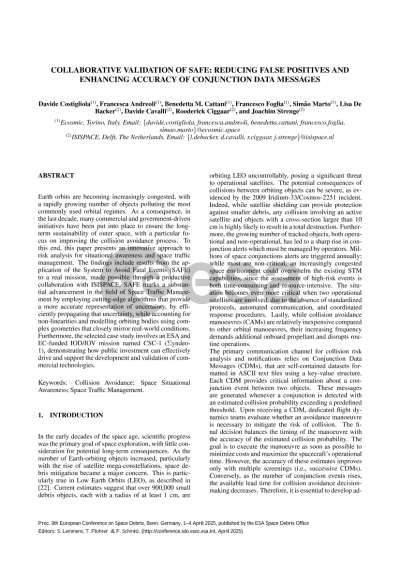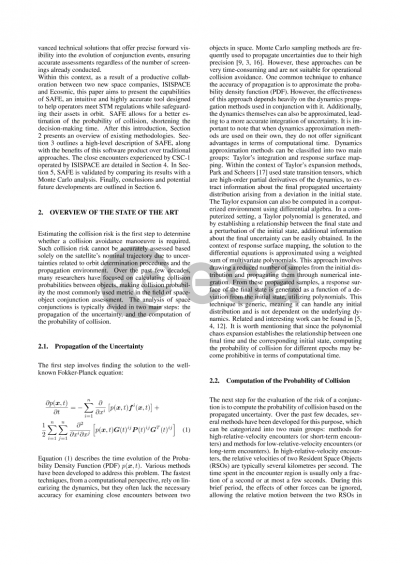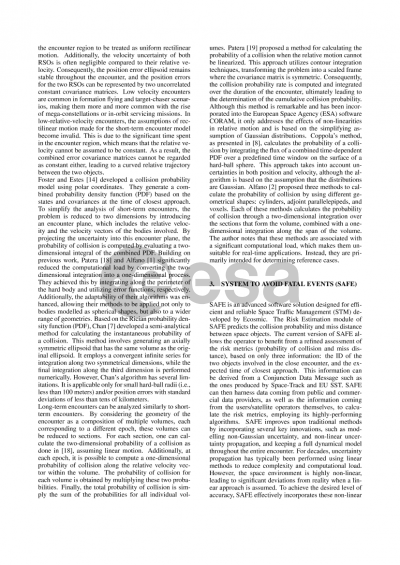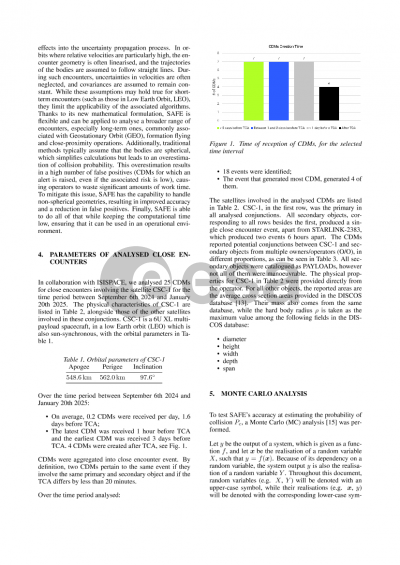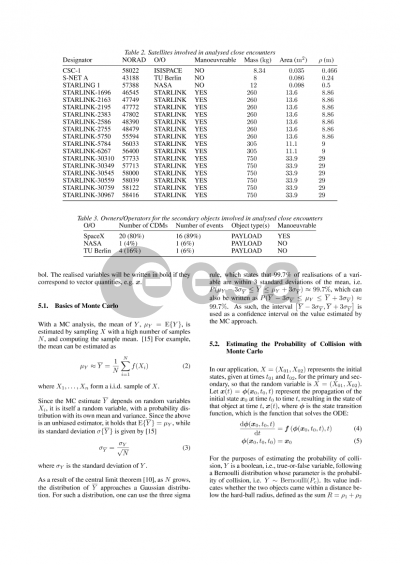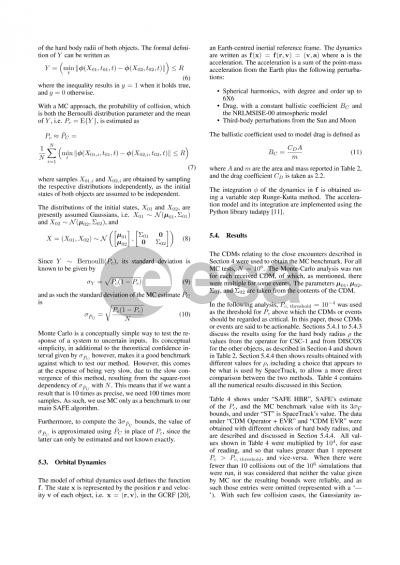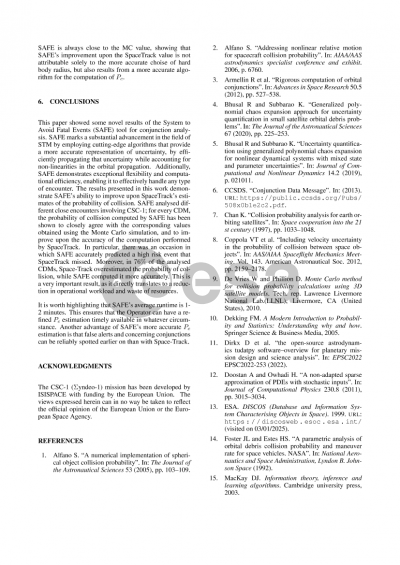Document details
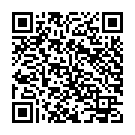
Abstract
Ecosmic and ISISPACE are two NewSpace companies that have been collaborating throughout 2024 on a variety of topics linked to space sustainability, mutually enhancing their capabilities through knowledge exchange and collaboration. Ecosmic is dedicated to the development of software microservices for space, with a focus on space sustainability, and ISISPACE is dedicated to the design, manufacture and operation of CubeSats.
The project described in this paper aimed at demonstrating the capabilities of the System to Avoid Fatal Events (SAFE), an intuitive and highly accurate tool designed to help operators meet STM regulations while safeguarding their assets in orbit. SAFE is a SaaS product hosted on Amazon's cloud platform, AWS. It is designed to be interacted with through a set of authenticated REST APIs, that provide operators with an advanced risk assessment, combining public, private, and proprietary data for comprehensive insights. The output includes precise collision probability and miss distance estimations, as well as additional insights into the close encounter. Results are shared either directly to the operators, by integrating them in the organization's backend through machine-to-machine information exchange, or with other notification means.
By 2024, a lot of effort has been invested worldwide to enhance collision avoidance procedures and define requirements and good practices to ensure the long-term sustainability of outer space. In particular, several algorithms have been developed to assess the probability of collision between two approaching objects. The most well-known algorithms are Alfano, Foster and Estes, and Patera. All these methods are based on a three-dimensional Gaussian distribution of the satellite states, and the collision probability is evaluated as the integral of the probability density function. However, these algorithms rely on strong simplifying assumptions, such as the linearisation of encounter dynamics. Consequently, they yield only rough estimates of the relevant metrics for close encounters in space, resulting in a false alert rate as high as 99%.
SAFE marks a substantial advancement in the field of STM by employing cutting-edge algorithms that provide a more accurate representation of uncertainty, by efficiently propagating that uncertainty while accounting for non-linearities and modelling orbiting bodies using complex geometries that closely mirror real-world conditions. Preliminary investigations show SAFE can reduce alerts by a factor of 10 and improve accuracy by 70% over traditional methods. Additionally, SAFE demonstrates exceptional flexibility and computational efficiency, enabling it to effectively handle any type of encounter. The reference mission that will be analyzed throughout this paper is CSC-1, a 6UXL CubeSat built and operated by ISISPACE. The CSC-1 mission is funded by the European Space Agency and the European Commission to conduct in-orbit demonstration and verification activities.
SAFE analyzed all close encounters involving CSC-1 since its injection in orbit in October 2023, and the results have been compared with all the Conjunction Data Messages related to CSC-1 received by ISISPACE from Space-Track. This analysis covers key metrics such as collision probability, miss distance, and execution times. A preliminary accuracy analysis for one of the aforementioned CDMs shows that the probability of collision obtained by SAFE (0.0004) agrees with the results of a MC simulation (100’000 samples) within one standard deviation, unlike the estimate of Space-Track (0.00003). The same approach will be applied to other CDMs to further validate the software's capabilities in aiding operators to protect their assets in space, and statistically relevant conclusions will be drawn about SAFE’s capability to effectively filter out false alerts.
Preview
